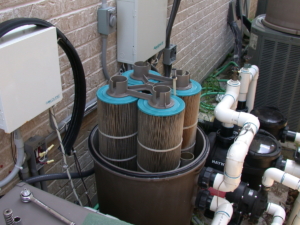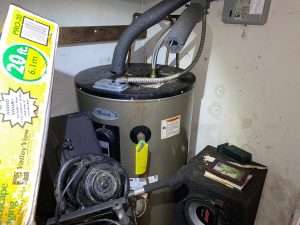Rocker Switch: Definition, Function, and Common Uses
The rocker switch is a common and versatile tool. It’s found in many places, from homes to offices, even in cars. This type of switch works simply, with a “rocking” movement to turn it on or off. But, there’s more to this handy switch than meets the eye. With a variety of styles, sizes, and functions, it’s a key player in electrical systems around the world. This blog post will delve into the rocker switch, exploring its features, uses, and benefits.
What is a Rocker Switch?
A rocker switch is a type of electrical switch that is widely used in various applications. It is named after its unique appearance, resembling a rocking chair or seesaw. This popular switch is known for its simplicity and ease of use, making it a go-to choice for many electrical installations.
Definition and Function
A rocker switch is an on/off switch that operates by rocking back and forth on a pivot point. It consists of a rectangular housing, which contains a lever or paddle that can be pressed down on one side and released on the other. This simple yet effective design allows users to easily control the flow of electricity with a simple flick of their finger.
The main function of a rocker switch is to complete or break an electrical circuit. When the lever is pressed down, it closes the circuit and allows the flow of electricity. Conversely, when the lever is released, the circuit is broken, interrupting the flow of electricity. This on/off functionality makes rocker switches suitable for a wide range of electrical devices and systems.
Types of Rocker Switches
Rocker switches come in various types, each designed to meet specific needs and requirements. Here are some common types of rocker switches:
- SPST Rocker Switch: SPST stands for Single Pole, Single Throw. This type of rocker switch has two terminals and is commonly used for simple on/off applications.
- SPDT Rocker Switch: SPDT stands for Single Pole, Double Throw. With three terminals, this rocker switch allows the user to choose between two different circuits or pathways.
- DPST Rocker Switch: DPST stands for Double Pole, Single Throw. Similar to the SPST, this rocker switch has two terminals, but it controls two separate circuits simultaneously.
- DPDT Rocker Switch: DPDT stands for Double Pole, Double Throw. This rocker switch has six terminals and provides users with the option to switch between two different circuits or pathways, each with two possible connections.
- Momentary Rocker Switch: This type of rocker switch returns to its original position after being released. It is commonly used in applications where temporary or momentary electrical connections are required.
These are just a few examples of the different types of rocker switches available. The choice of rocker switch depends on the specific application and the electrical requirements of the system.
How Does a Rocker Switch Work?
A rocker switch is a type of electrical switch that is commonly used in various applications, ranging from household appliances to automotive controls. In this section, we will explore the internal mechanism and circuit operation of a rocker switch to understand how it works.
Internal Mechanism
The internal mechanism of a rocker switch is designed to facilitate smooth and reliable operation. It consists of several key components, including:
- Actuator: The actuator is the visible part of the switch that can be pressed or toggled. It is usually shaped like a rocker, hence the name “rocker switch.” When the actuator is pressed on one side, it moves the internal components to make or break the electrical connection.
- Pivot Point: The pivot point is a fulcrum located at the center of the switch. It allows the actuator to pivot back and forth smoothly.
- Contacts: The contacts are the conductive elements that make or break the electrical connection when the switch is operated. A rocker switch typically has two sets of contacts: one for the “on” position and another for the “off” position. These contacts can be made of various materials, such as silver or copper, to ensure good conductivity.
- Springs: Springs are used to provide tension and ensure that the contacts are held in position securely. They help return the actuator to its original position when it is released.
Circuit Operation
The circuit operation of a rocker switch depends on its configuration and the desired functionality. Here, we will discuss a basic circuit operation commonly found in single-pole single-throw (SPST) rocker switches:
- On Position: In the “on” position, the actuator is pressed on one side, causing a mechanical linkage to move the contacts into a closed position. This completes the circuit, allowing the flow of electrical current. For example, in an appliance, the “on” position of a rocker switch may activate the power supply to the device, turning it on.
- Off Position: In the “off” position, the actuator is pressed on the other side, moving the contacts into an open position. This breaks the circuit, interrupting the flow of electrical current. Consequently, the device connected to the switch is turned off.
It is worth noting that the circuit operation may differ for different types of rocker switches. Some may have multiple poles or throws, allowing for more complex switching configurations. However, the basic principle remains the same: the actuator’s movement controls the position of the internal contacts, determining whether the circuit is open or closed.
Common Uses of Rocker Switches
Rocker switches are versatile electrical switches that are commonly used in a wide range of applications. Due to their simple design and ease of use, rocker switches have become popular choices in various industries. In this section, we will explore the common uses of rocker switches in home appliances as well as industrial and commercial applications.
Home Appliances
Rocker switches are vital in many home appliances, providing a convenient way to control different functions. Here are a few examples of how rocker switches are utilized in various household devices:
- Lighting Control: Rocker switches are often used to control the lighting in different areas of the house. With a simple flip of the switch, you can turn the lights on or off, creating a comfortable and well-lit living environment.
- Kitchen Appliances: From ovens to dishwashers, rocker switches are frequently found on a variety of kitchen appliances. They allow users to easily power on/off the device or select different cooking modes, providing a seamless cooking experience.
- HVAC Systems: Heating, ventilation, and air conditioning (HVAC) systems often incorporate rocker switches to regulate temperature settings. These switches enable users to adjust the fan speed, control heating or cooling modes, and maintain a comfortable indoor climate.
Industrial and Commercial Applications
In addition to home appliances, rocker switches are extensively used in industrial and commercial settings. Their robust design and reliability make them ideal for demanding environments. Here are some examples of how rocker switches are utilized in these sectors:
- Machinery Control: Rocker switches are commonly employed in machinery control panels to operate various functions. They allow operators to start or stop motors, control the speed of conveyor belts, and activate different machine processes, ensuring efficient and safe operations.
- Automotive Industry: Rocker switches are widely used in vehicles for controlling a range of functions. Whether it’s adjusting the side mirrors, operating the power windows, or activating the windshield wipers, rocker switches provide a user-friendly interface within the driver’s reach.
- Emergency Systems: Rocker switches are components in emergency systems such as fire alarms and security systems. They enable quick activation or deactivation of alarms, ensuring prompt response in critical situations.
Rocker switches are truly versatile, finding applications in both everyday household items and complex industrial systems. Their simplicity, reliability, and ease of use make them a preferred choice in various industries. Whether you’re at home, in the office, or in a factory, chances are you’ll encounter a rocker switch providing simple yet effective control.
Advantages of Rocker Switches
Rocker switches are a popular type of electrical switch that offer several advantages over other types of switches. In this section, we will explore the key advantages of rocker switches, including their ease of operation, durability and longevity, as well as their versatility and aesthetics.
Easy to Operate
One of the main advantages of rocker switches is their ease of operation. With their simple on/off mechanism, rocker switches are incredibly user-friendly. Unlike some other types of switches that require precise positioning or a firm push, rocker switches can be easily operated with a gentle press of the finger. This makes them ideal for individuals with limited dexterity or those who prefer a more effortless switch operation.
Durability and Longevity
Rocker switches are known for their durability and longevity. Made from high-quality materials such as robust plastics or metals, these switches are built to withstand frequent use and various environmental conditions. The sturdy construction ensures that rocker switches can endure the test of time without compromising their functionality. Whether they are used in residential homes, commercial buildings, or industrial settings, rocker switches are designed to provide reliable performance for years to come.
Versatility
Another advantage of rocker switches is their versatility. These switches can be found in a wide range of applications, from household appliances and lighting fixtures to automotive and marine systems. The ability to accommodate different voltage ratings and current capacities makes rocker switches suitable for various electrical devices and installations. Additionally, rocker switches can be configured in single-pole, double-pole, or multiple-pole configurations, allowing for greater flexibility in electrical circuitry design.
Aesthetics
Apart from their functional advantages, rocker switches also offer aesthetic benefits. Their sleek and modern design adds a touch of sophistication to any space. Whether in a contemporary home or a professional office setting, rocker switches blend seamlessly with different interior styles. Furthermore, the availability of various colors, shapes, and finishes allows for customization, enabling individuals to choose a rocker switch that complements their overall decor.
How to Install a Rocker Switch
Are you ready to take control of your electrical devices with a rocker switch? Installing a rocker switch can be a straightforward process that allows you to easily turn your appliances on and off. In this section, we will guide you through the step-by-step installation process, ensuring that you have all the necessary tools and materials at your disposal.
Required Tools and Materials
Before you begin the installation, make sure you have the following tools and materials:
- Rocker switch: Choose a rocker switch that suits your needs and preferences. There are various types and designs available, so select one that matches your style and the electrical requirements of your appliances.
- Screwdriver: A Phillips or flathead screwdriver will be necessary to secure the switch into place.
- Electrical tape: This will help ensure a secure and safe connection.
- Wire stripper: Use a wire stripper to remove the insulation from the wires, allowing for proper connectivity.
- Wire connectors: These connectors will assist in joining the wires securely.
- Electrical wires: Purchase wires of the appropriate gauge and length, depending on the distance between your switch and the electrical device.
- Safety goggles and gloves: Protect yourself by wearing safety goggles and gloves to prevent any potential accidents or injuries.
Step-by-Step Installation Guide
Now that you have gathered all the necessary tools and materials, let us guide you through the installation process step by step:
- Turn off the power: Before you begin, ensure that the power to the electrical circuit you will be working on is turned off. This will prevent any potential electrical hazards.
- Identify the wires: Identify the wires connected to the device you want to control with the rocker switch. There will typically be a live wire (usually black), a neutral wire (usually white), and a ground wire (usually green or bare copper).
- Strip the wires: Use your wire stripper to carefully remove about half an inch of insulation from the ends of the wires. Take care not to damage the conductive copper strands.
- Connect the wires: Connect the live wire from the device to one of the terminals on the rocker switch. Similarly, connect the neutral wire from the device to the other terminal. If your rocker switch has an additional terminal for the ground wire, connect it as well. Ensure that the connections are secure and tight.
- Secure the switch: Once the wires are connected, carefully place the rocker switch into the electrical box or mounting location. Use the screws provided to secure the switch in place. Make sure it is firmly attached and does not move.
- Insulate the connections: To prevent any accidental contact and ensure safety, wrap electrical tape around the exposed connections.
- Restore power: Finally, turn on the power to the circuit and test your new rocker switch. Flip it on and off to ensure that it is operating smoothly and controlling your device as intended.
Congratulations! You have successfully installed a rocker switch and gained control over your electrical devices. Remember, if you are uncertain about any part of the installation process, consult with a qualified electrician to ensure a safe and accurate installation.
Stay tuned for more informative sections in this article, where we will explore additional topics related to rocker switches and their applications.
Maintenance and Troubleshooting Tips
When it comes to maintaining and troubleshooting your rocker switch, there are a few key things to keep in mind. By taking proper care of your switch and knowing how to address common issues, you can ensure its longevity and optimal performance. In this section, we will cover Cleaning and Care, as well as Common Issues and Solutions.
Cleaning and Care
To keep your rocker switch in top shape, regular cleaning and care are essential. Here are some tips to help you maintain your switch:
- Wipe down regularly: Dust and debris can accumulate on the surface of your rocker switch, affecting its functionality. Use a soft, lint-free cloth to gently wipe the switch clean on a regular basis.
- Avoid liquid exposure: Rocker switches are not designed to withstand exposure to liquids. Keep your switch away from water, cleaning solvents, and other liquids to prevent damage.
- Inspect for damage: Periodically inspect your rocker switch for any signs of damage, such as cracks or loose components. If you notice any issues, it is important to address them promptly to avoid further problems.
- Check connections: Ensure that the connections between the switch and any connected devices are secure. Loose connections can cause the switch to malfunction or not work at all.
Common Issues and Solutions
Even with proper care, rocker switches can sometimes experience issues. Here are some common problems and their potential solutions:
- Switch not functioning: If your rocker switch is not working, the first step is to check the power source. Ensure that the switch is receiving power and that the circuit breaker or fuse is not tripped. If the power source is not the issue, it is possible that the switch itself is faulty and may need to be replaced.
- Switch getting stuck: If your rocker switch is getting stuck in one position or is difficult to move, it may be due to debris or dirt buildup. Try cleaning the switch as mentioned earlier. If the issue persists, there may be an internal problem with the switch mechanism, and it is advisable to consult a professional for repair or replacement.
- Inconsistent connection: If your rocker switch is intermittently losing connection or causing devices to flicker, it could be due to loose connections. Check the wiring connections to ensure they are secure. If the problem persists, there may be an issue with the switch itself, and it may need to be replaced.
- Overheating: If your rocker switch is getting excessively hot during use, it could indicate an overload or a problem with the connected devices. Check the amperage rating of the switch to ensure it can handle the load. If the issue continues, consult an electrician to assess the situation.
Remember, if you are uncertain about any maintenance or troubleshooting tasks, it is always best to consult a professional electrician or the manufacturer for guidance. Taking care of your rocker switch properly and addressing issues promptly will help ensure its longevity and reliable performance.
Conclusion
In conclusion, the rocker switch is a versatile and reliable component for controlling electrical circuits. Its simple design and ease of use make it a popular choice in various industries and applications. Whether you need to turn on a light, operate a motor, or control the power supply to a device, the rocker switch can efficiently meet your needs.
With its straightforward ON/OFF functionality and durable construction, the rocker switch provides a reliable solution for controlling electrical currents. Its ergonomic design allows for easy operation, making it ideal for both professional and consumer use.
Furthermore, the rocker switch offers the advantage of being customizable, with options such as different colors, shapes, and sizes available to suit specific requirements. This flexibility makes it possible to integrate the rocker switch seamlessly into different devices and systems.
From household appliances to automotive applications, the rocker switch proves its reliability and efficiency time and time again. Its wide range of applications and popularity in various industries is a testament to its effectiveness and practicality.
In summary, the rocker switch is a reliable, user-friendly, and customizable component that offers efficient control over electrical circuits. Its simplicity, durability, and versatility make it an excellent choice for both professionals and consumers alike. So, whether you’re looking to upgrade your home’s light switches or incorporate it into your next electrical project, the rocker switch is an excellent option to consider.









